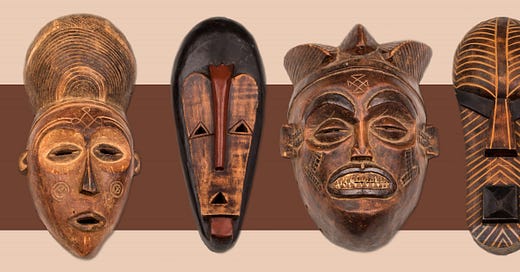Liberals are more anxious than conservatives. With the exception of extreme behaviors, like suicide, hallucinations, violence, or theft, measuring anxiety seems to be akin to measuring “pain.”
How do we measure pain? How does pain impact people’s lives? The only way to measure pain is through self-reporting. We could find that conservatives deal with less chronic physical pain than liberals. Would this indicate that liberals are less healthy, or that liberals are bigger cry-babies, or that liberals think that chronic pain is a protected class with status benefits?
Self-reported pain, or self-reported mental illness, is not as important as real world results. In the real world, liberals drive politics forward; they control institutions; they educate children; they shape the future. If mental illness is what allows people to do that, then mental illness is adaptive, not pathological.
depression/anxiety as a survival strategy.
Depressed and anxious people may tend to become liberal because anxiety and depression are both social attachment disorders. People with anxiety and depression tend to fear rejection, feel rejected, have a sense of impending doom, and are scared of the future. Such people are much more likely to be conformist, since group conformity is a safer survival strategy. They are much less likely to take risks. Liberal conformity is a K-selective strategy for avoiding violence and conflict.
Depression is a survival strategy which people employ in order to transition from one tribal order to another. Imagine if your little village were invaded by an empire, Apocalypto-style. If you got angry and resisted conquest, the conquerors would kill you. If you curled up in a ball on the ground in a fetal position, the conquerors would be more likely to let you live.
Depression is a coping strategy that people use to deal with being conquered by an empire. America is the empire which has conquered America. Depression is a logical response to the destruction of the Christian order. I’m not arguing that people should induce depression in themselves, although it seemed to work for van Gogh.
Camille Paglia lays out a fairly convincing case in Sexual Personae (1990) that the more mentally tortured an artist is, the better their art is. This might be because art is a means of attempting externalization, resolution, or catharsis. People who are chill-maxing all the time, who are low in anxiety and have no depression, have little incentive to create art. In that respect, mental suffering could be a superpower that the left uses to crush its enemies, artistically and symbolically.
Conservatives are repressive, liberals are expressive.
modern art and mental illness.
Rob Henderson describes liberal beliefs as “luxury beliefs,” where rich people signal their progressivism to distinguish themselves from dumb or poor people. Henderson might also say something like “modern art is luxury art — it can only exist in a very rich and decadent society.” Could art which is challenging, ugly, or grotesque survive in a more “rugged” society?
Ancient cultures loved horror. Ancient religions worship cannibal demons who demand mutilations and sacrifices. Primitive societies are ugly, and modern art is an attempt to recapture the aesthetics of primitive societies. Raw and passionate emotions tap into man’s Freudian death-drive.
Nudism, body modifications, tattoos, piercings, orgies, sodomy, vegetarianism, rapping, drug use, and the love of the exotic are all examples of ancient and primitive practices that have been revived by the left. Worshipping ugly art could be considered part of the “mental illness” of the left, but this is to pathologize the vast majority of pre-modern cultures, including the European tradition of gargoyle sculpture.
Conservatives are low in openness. Their tolerance of other viewpoints is not evidence of openness, but a lack of sensitivity, or recognition of the importance of ideology.
Conservatives hate Halloween
Conservatives value sacredness and have a higher disgust reaction. Anything which is ugly or perverse provokes repulsion. A significant proportion of conservatives hate Halloween for example.
When asked, “when you consider the pagan origins of Halloween, which is closer to your attitude?” — those who are non-religious accept these aspects 75%, and those who only attend church on holidays accept the pagan elements at 82%. But only 45% of Evangelical Christians accept the pagan origins of Halloween.
Conclusion to this 12 part series.
Anxiety and depression are not “mental illnesses” but “mental strategies.” This may sound like a semantics game, but it’s not. For example, left-handedness is certainly unusual, but it is not a disease. As long as you don’t force them to be right-handed, they simply exist naturally.
Most intelligent people who are neurodivergent can be productive members of society. They are different from the average person, but they aren’t necessarily in need of fixing or a cure.
The best definition of disease is biological and economic. First, does the disease interrupt normal biological functioning? If leftism were correlated with:
suicide,
obesity,
fewer hours worked,
lower levels of education,
lower intelligence,
decreased sexual interest,
lower levels of empathy,
and decreased social cooperation,
then we could say that leftism is pathological. But the evidence points in a different direction. Amorphous self-reporting that leftists “feel anxious” is not a sign of genetic deterioration, mutational load, spiteful mutants, or psycho-pathology. In fact, “feeling anxious” seems to be an adaptive trait, within the context of a highly educated, urbanized, and regulated society.
Conservatives do have higher testosterone and more muscle mass than liberals, so in this sense, they are more physically healthy. According to Ted Kaczynski, liberals are “over-civilized,” and pathological, according to the laws of nature. This is a defensible position, but it must be stated explicitly. Conservatives should be honest about their values and definitions.
It is possible that extreme liberals are indeed more mentally ill than conservatives. If we judge health by fertility, this is undeniably true. However, this definition of “health” breaks down when we look at those who are high school dropouts or third world slum-dwellers. Just because someone pops out more kids does not tell us anything about whether or not they are “healthy.”
It is likely that anyone who is “extreme” in any regard is at greater risk for mental illness. Extreme conservatives just hide their mental illness with religious semantics and church attendance.








I prefer the old school wirchowian/szaszian approach of defining disease as “absence of physical lesion/pathology”. The strategic redefinition of disease to include human behavior and misbehavior creates more problems than it solves.
Most things have pluses and minuses no? Autism plus high IQ is probably responsible for most material advances throughout history (Isaac Newton never got laid), but is pretty unpleasant unless you're one of the few who get rich.
I'd overall argue the balance of anxiety and depression depends on the level of ambient threat. Some level of fear is adaptive--if you're not afraid of a tiger you get eaten, and if you're not afraid of getting fired you lose your job. Now chronic anxiety and depression are very unpleasant for the individual (even if they sometimes produce great art), but are responses to frequent low-level threats distinct from the less frequent high-level threats our ancestors faced.
It's kinda like old-school D&D where the races had ability score adjustments. Elves had +1 DEX, -1 CON -- great for someone in the back row, not so great for a front-line fighter. Halflings had -1 STR, +1 DEX --bad for a fighter, great for a thief. Liberals and conservatives are good at different kinds of things.